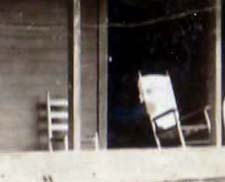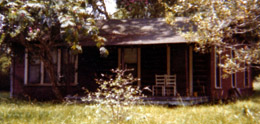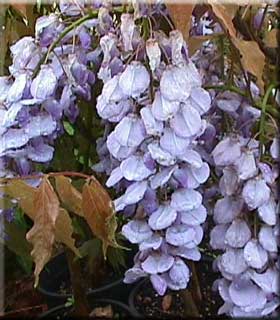Houses
House Types
Burke houses, whether the best and largest home in town or a farmhouse were built to suit the hot climate. Before the advent of air conditioning, heat dissipation was the primary design consideration. Most early houses had the following features:
- Block construction
The blocks kept a layer of cool air under the house.The area under blocked houses also served other purposes. It provided a cool, shaded sandbox for you young children to play in as well as a cool, dry place to store and preserve potatoes and onions throughout the year.
- High ceilings
High ceilings let the hot air rise above the inhabitants.
- Corrugated metal ("tin") roofs
Metal roofs reflected the searing Texas sun.
- Large porches
Most houses had a big front porch and some had back and side porches. Porches were the "living rooms" of the day where most visiting was done in the summer. In some cases porches were built around an underground cistern, making drawing water more convenient. Most porches were outfitted with a porch swing, a rocking chair or two, and straight chairs. After the advent of electricity, open porches often had a yellow light bulb to avoid attracting bugs.
- Screened porch areas
Usually one or more of the porches was screened to permit sitting in the evening without worrying about mosquitos.Some earlier houses had screened breezeways in the middle. If oriented with the prevailing winds, the breezeway often had a nice breeze. Many put beds on their screen porches in the summer, turning them into "sleeping porches."
Furniture
- Rocking chair
The rocking chair was ubiquitous at Burke and throughout the South, both inside the house and on the front porch. The rocking chair could be used to rock the baby to sleep or just relax and while away the hours. There was nothing quite so relaxing as coming home from a hard day in the fields and sitting in the rocking chair as night fell. The author's great-grandmother, Emma Johnson Samford, spent many days in her rocking chair cutting and sewing scraps of cloth together in intricate patterns for quilt tops, all the while enjoying her Levi Garrett snuff.
porch. The rocking chair could be used to rock the baby to sleep or just relax and while away the hours. There was nothing quite so relaxing as coming home from a hard day in the fields and sitting in the rocking chair as night fell. The author's great-grandmother, Emma Johnson Samford, spent many days in her rocking chair cutting and sewing scraps of cloth together in intricate patterns for quilt tops, all the while enjoying her Levi Garrett snuff.
A rocking chair is shown along with its ubiquitous companion, the straight chair, on the porch of Burke natives Patrick and Rosaline Landrum near Diboll.
- Ladderback Straight Chair
A "straight" chair, as contrasted with a rocking chair, is a chair of very plain and simple design that was ubiquitous in the homes of Burke families until the late 20th Century. Usually unpainted, straight chairs frequently had suspended seats, often of cowhide attached by rawhide strips.
Straight chairs were very versitale. They were great for tipping back on the rear legs and reclining against the wall. One could even rock back and forth on the rear legs if careful. Straight chairs could also be turned in to a chaise lounge by turning them over with the rear of the back angled upward and placing a pillow on top. Men would often sit in them backwards straddling the seat and bracing their arms on the back.
Men would often sit in them backwards straddling the seat and bracing their arms on the back.
Two straight chairs are shown in the nearby photo on the front porch of the Virge and Hester Murrah house in 1979. A straight chair is also shown partially obscured by a support post in the immediately preceding photo.
- Porch swing
The third member of the front porch furniture triad was the porch swing. The author remembers his grandfather Frank Johnson sitting in his porch swing puffing on a pipe. At times he would prop a pillow on one end and lie in the swing. The author was once sitting in the swing eating a bowl of jello and somehow tumbled out of the swing into the yard.
Appliances
- Wood cook stove
In the windter Florence Johnson would leave the cook stove's oven door open to warm the house. One day she came in from outside chores to start dinner (noon meal), slammed the door shut, and started a fire. Soon she heard a cat meowing. As the cat's meowing became louder, she look under the cabinets and everywhere she could think the cat might be. Finally she opened the oven door, and the cat shot out and into the yard. Earlier in the day the cat had decided to curl up in the warmth of the oven, and she had unknowlingly shut it in the oven. Unfortunately she opened the door too late, and the cat died.
- Cooling, ice boxes, and refrigerators
In the early days the only way people had to cool food was to suspend it in a sack in a well or cistern. That was the way milk was sometimes preserved for short times and watermelons were cooled prior to consumption. When ice houses began to appear in the towns, people bought "ice boxes" that used blocks of ice for cooling and preservation. After electrification people began to buy electric refrigerators, which the continued to call "ice boxes". Some called them "frigidaires" after a prominent brand name.
- Fireplace
Fireplaces were a popular way to heat homes in the winter. Most people found that fireplaces would lead to burning on one side and freezind on the other. Most chimneys were made of brick, but the webmaster's grandparents, Virge and Hester Murrah had a chimney may of sticks and mud.
- Wood heater
Those who did not have a fireplace used wood heaters. The best ones were cast iron and had stovepipe routed through the ceiling. However, more temporary installations used heats made of light steel ("tin heaters") and routed the stovepipe through a window with a pane removed.
- Light plant
Before electrification some houses installed Delco electrical generators.
The Yard
Before the era of lawn mowers and pampered lawns, yards were simple affairs. Residents, especially those on the farm, had more critical things to do than work in the yard. As a result yards and flowers had to be both easy to care for and attractive.
Grass was not usually part of a yard. SInce lawn mowers were not available, or in later years too expensive, most early Burkians removed weeds and grass from their yadrs with a hoe and rake, leaving a bare dirt surface.
On the farm, yards were usually fenced to prevent chickens, cows, hogs and other farm animals from entering. Chickens left their droppings everywhere, which as particularly unpleasant to barefoot children who made a wrong step. Chicken manure between the toes is not a pleasant experience.
Flowers
- Cannas
- Four O'Clock
- Verbena
- Wisteria

- Hollyhock
- Roses
- Sunflower
- Jessamine
- Honeysuckle
- Hydrangea

- jonquil ("johnny quill")
- Cape jessamine (gardenia)
- Yellow jessamine
- Lantana
Trees
- Arborvitae
- Chinaberry Tree
Chinaberry trees were imported to the South from Asia about 1830, and they proved to be very popular as shade trees around houses. The dense canopy of small leaves created a dense shade that shaded and cooled the house but usually prevented grass grown beneath them. The trees produce bunches of green berries.
The chinaberries proved irresistable to the baseball-crazed author when he was a boy. We bought my grandfather Johnson's farm, and there were probably a half dozen chinaberry trees around the house and outbuildings. The author would climb on top of a shed and pick the berries until he had a coffee can full. He would use the berries practice throwing accuracy, chickens and dogs having the misfortune of being the target. Later he leared he could pitch them us like a baseball and hit them with a baseball bat. Hitting a small chinaberry was very difficult, and the the author became very good at it, sending many a chinaberry soaring over the chickenhouse for a "home run." Unfortunately, that skill did not translate into the real game of baseball, and the author was nevery a good baseball player except in his own mind.
- Catalpa
Catalpa trees were a popular yard tree primarily because they produced some of the best catfish bait available. They also had a nice light green color, provided decent shade, and had a somewhat attractive flower. Their drawback was the beanlike seed pods they produced every year.
Catalpa trees are the only known host for the caterpillar stage of the catalpa sphinx moth. These catalpa "worms" would infest the trees every year and consume the tender leaves, in many cases until the tree is completely stripped. The worms would be harvested for fish bait using a long cane pole to dislodge them from the leaves and knock them to the ground. The catalpa worm,
a green caterpillar that lives on the catalpa tree, is well known as a tree pest, but is better known to some for its attractiveness to catfish. References to their collection as bait reportedly date back to the 1870s. Tough in texture, they sport a black head and tail with a neon strip down either side of its back. When put on a hook, which according to some should be a circle hook with heavy sinkers to make sure the bait is on the bottom, a bright fluorescent green fluid oozes from its body that smells sweet, which is its attractiveness. It is also reported to "wiggle forever on a hook." This sweet aroma and liveliness of this worm make it very appealing to fish. - Crape Myrtle
- Dogwood
- Redbud
Fruit Trees
- Pair
- Peach
- Fig
House Plants
- Snake Plant
- Jacob's Coat
- Ivy
Water Sources
Since Burke did not have a public water system until the 1960s, water came either from cisterns or wells. Most cisterns were underground and consisted of a short shaft above an enlarged, lined cavern, Aboveground cisterns were tanks made of sheet metal. Both types of cisterns collected rain water from the house's roof via a system of gutters.
Most wells were hand dug and lined with bricks. A few were hand bored with a device that look like a post hold digger with a T-bar handle at the top for manual rotation..
Both below ground cisterns and wells used a bucket on a rope over a pulley to draw water. One would lower the bucket and jiggle it to cause it to sink and then pull it to the surface with the rope. There was nothing as refreshing as drinking cold water directly from the bucket. With cisterns one had to be careful to avoid "wiggletails", the larval stage of mosquitos. Some would pour a spoonful of kerosene into their cisterns to seal the water surface and block oxygen and kill the wiggletails. Bored wells used a bucket with a trap door on the botton to let in and then trap water for the trip to the surface.
Old wells and cisterns could be dangerous, and parents cautioned children to say away from them. The webmaster's mother lost her first child due to the exertion of pulling her grandmother from an old cistern that she fell into when it caved in. Even when dug wells were not dangerous, they could still be a hazard. One time the webmaster's childhood buddy Johnny Rose lost his glasses when he looked into a well on the Murrah place,
A very few people still depended upon springs for some of their water. Springs dried up as residents began to drill modern wells and lowered the water table.
Sources:
- M. Lee Murrah, Personal Recollections